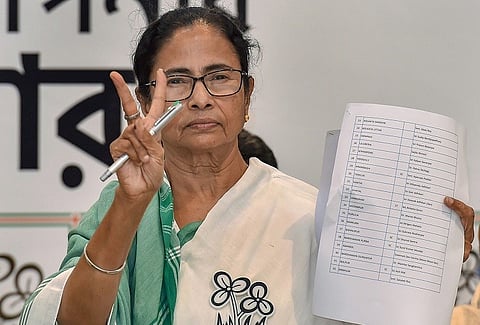

The Trinamool Congress Party (TMC) recently made an exceptional announcement. Its supremo and West Bengal Chief Minister Mamata Banerjee released the list of candidates the party would be fielding in the upcoming Lok Sabha elections, and 41% of them are women. 17 out of the 42 seats TMC is contesting from will have female candidates.
Further, Odisha Chief Minister Naveen Patnaik has also announced that his party, BJD, will be fielding 33% women candidates for the 2019 general election.
This is not the first time that TMC is setting an example, moving ahead of lip service to women’s representation in politics. In the 2014 too, 35% of the candidates who contested from the party were women. But are other political parties taking cue? Not really.
For instance, Congress President Rahul Gandhi was in Chennai on Wednesday, when he assured that women would have 33% reservation in government posts and the legislatures if his party came to power. He added that the Congress would look to pass the Women’s Reservation Bill as well. Rahul announced this to all-women crowd at Stella Marris college, and was met by smattering applause. However, his assurance comes at an opportune time with the Lok Sabha elections just weeks away.
But what is his party’s record when it comes to actually fielding women candidates? In 2014 general elections, the Indian National Congress only had 60 women candidates among the 464 seats it fought on.
Other political parties do not seem to be faring much better. BJP, the ruling party, had only 38 women candidates contest from a total of 428 seats. Other parties including the Aam Aadmi Party, AIADMK followed a similar pattern.
It is not unusual for politicians to announce sops for women when polls are around the corner – after all, India’s women voters have been turning up in higher numbers too. In 2014 Lok Sabha elections, 15 of 35 states and Union Territories saw a higher number of women voters than men.
However, women’s representation in politics stood at an abysmal 12.6% in the Lok Sabha after the 2014 elections. And as of last year, only 28 of the 244 MPs in the Rajya Sabha were women (11.5%).
Meanwhile, in the southern states, only LDF has released its full candidate list. And the CPI (M), which leads the ruling coalition in Kerala, has announced only two women candidates from the 16 seats. Ironically, it is the CPI(M) that was in the forefront to organise a Women's Wall in Kerala to speak about liberation and renaissance. And in Andhra, the Jana Sena's candidate list for 32 seats has only three women.
And while we can wait and watch how many women candidates are fielded by other major national and state parties, it is unlikely that it would mean anything ground breaking for women’s representation.
Moreover, the Women's Reservation Bill, which would ensure 33% reservation for women in the Lok Sabha as well as Legislative Assemblies on rotational basis, has been lying lapsed in the Parliament since the 15th Lok Sabha.
This is the state of things, even though women legislators have been shown to raise economic performance of their constituencies by 1.8% every year compared to male legislators. The latter are also three times more likely than women to have criminal charges pending against them, as per a report by United Nations University World Institute for Development Economics Research.
A noteworthy theory when it comes to women’s representation is that of “critical mass.” It essentially says that to make a significant impact, women’s representation needs to grow beyond a few individuals and to a certain proportion. Many peg this at a target at 30% - which India seems to be nowhere close to reaching.
So, while India boasts of its first woman Defence Minister, an active female External Affairs Minister and a legacy of strong women politicians such as Indira Gandhi, a lot remains to be done for these to grow beyond optics and individual cases.